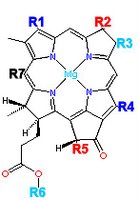Overview of Photosynthesis
| Cell type | Prokaryotes | Eukaryotes | ||
| Organism | Nonoxygenic prokaryotes | Oxygenic prokaryotes | Algae | Plants |
| Light-reaction photophosphorylation | cyclic | noncyclic | noncyclic | noncyclic |
| Photosystems | PSI | PSI & PSII | PSI & PSII | PSI & PSII |
| Location of photosystems | chlorosome | thylakoid membrane | thylakoid membrane of chloroplast | thylakoid membrane of chloroplast |
| Metabolism | Calvin cycle, C-3 in most prokaryotes, or reductive tricarboxylic acid cycle, or |
Calvin cycle | Calvin cycle | Calvin cycle (C-3) |









































